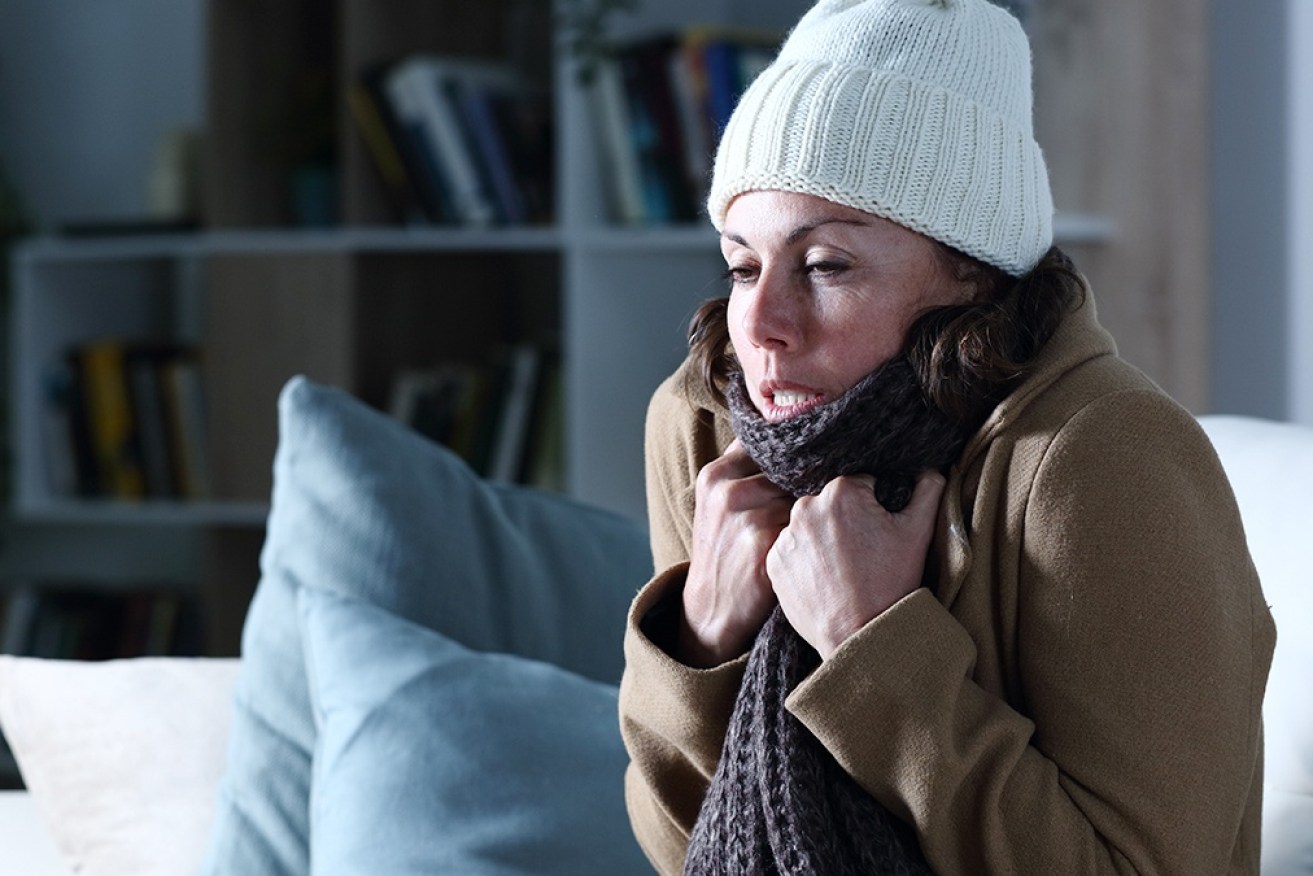‘Barely coping’: Australian renters freezing in cold homes


Australian renters are being left to freeze or deal with high energy bills in ill-built homes. Photo: Getty
Many Australian renters say they are barely coping as they struggle to keep their freezing houses warm over winter.
A new report has found some tenants are shivering in ‘‘Dickensian’’ homes well below 18 degrees for 75 per cent of the time due to poor ventilation, mould and damp.
When Kate, 51, moved into a newly built Brisbane apartment with her elderly parents in 2017, she thought she’d be able to take care of them and work from home at the same time.
Instead, the family have had the limits of their funds and health tested by the ‘‘worst housing’’ Kate has ever lived in within Queensland.

Kate’s mum, who needs a mobility aid to walk, fell victim to their home’s slippery floor this year.
After her mother suffered a nasty fall, Kate now finds herself rising at 4am every morning to ventilate the unit by opening doors and windows, and to go over the tiled floor with a heater and towels to get rid of cold-induced condensation.
‘‘She had a really bad fall – the sort of thing you see in cartoons. Her feet slipped out from under her and she went right up in the air and slammed down on her back,’’ Kate said.
Weather wreaks havoc on renters
Kate’s family took part of tenancy advocacy organisation Better Renting’s Winter Renter Researchers project, which tracked temperature and humidity in 75 rental homes between June and July.
The WHO says the lowest indoor housing temperatures should be is 18 degrees.
But Kate’s home recorded a minimum temperature of about 14 degrees during Better Renting’s project, and the family was found to have spent more than 30 per cent of their time enduring temperatures below 18 degrees.
The apartment’s ventilation points are more fit for show than purpose, the cooling and heating unit is not effective or energy efficient, and the large windows and doors are not double glazed.
There is also significant water leakage behind one of the bathroom walls, which will cost about $8000 to fix.

A peek into Kate’s morning routine that helps keep her parents comfortable and safe.
Warmer months are no better; the indoor temperature got close to 40 degrees over the previous summer.
Despite this, Kate said it was the coolest summer the family had experienced since moving in.
‘‘Ever since we’ve moved here, three to five months a year, the temperatures get so bad that we’re all sick, and we’re just barely coping,’’ she said.
‘‘Sometimes what makes people sick is not just exposure to the extreme temperatures, but never being in the comfortable temperature.’’
With her parents on pensions, and Kate herself receiving a disability pension, they’re struggling to fix their apartment’s problems, and can’t afford to move to a new home.
Common renter story
Kate’s story is not unique.
Better Renting executive director Joel Dignam said many Australian renters are facing a ‘‘never-ending’’ struggle to keep their house warm during winter.
The organisation’s research showed temperatures in rental homes were below 18 degrees for more than 18 hours a day on average.
Mould and damp are major issues, especially in New South Wales, which recorded the highest average humidity of any area, with many renters constantly fighting against condensation and damp.

The combination of cold and humidity in Kate’s home has led to mould.
All of these issues come with big physical and mental health risks.
“One thing people spoke about quite often is getting sick more often [and] staying sick for longer,” Mr Dignam said.
“People with health with pre-existing health conditions [like arthritis and fibromyalgia] also spoke about that being worse.
“A related health dimension is the mental health dimension. It is just so clear that people have a real anxiety about how to deal with energy costs.”
The findings come after Better Renting conducted similar research over the recent summer period, which found homes were above the recommended safe temperature of 25 degrees for an average of more than nine hours a day, leaving renters to suffer from poor sleep and difficulties working.
‘Essential’ regulation needed
Mr Dignam said many renters are slow to raise issues with their landlords in fear of putting their tenancy at risk with the current rental crisis, and are sometimes too ashamed to tell their loved ones about any problems.
‘‘If your home is cold and mouldy, you don’t really want to have your friends over,’’ he said.
‘‘Particularly on mould, people are often treated as if that’s their fault.’’
Despite the prevalence of ‘‘Dickensian’’ sub-standard homes in the country, he said Australian states and territories don’t have explicit requirements for temperatures in properties.
This stands in stark contrast to international standards seen in places such as New York, where residential building owners are required to maintain indoor temperatures at a minimum of 20 degrees Celsius during the day when outdoor temperatures fall below 13 degrees.
However, some Australian jurisdictions are making progress, such as Victoria, which now requires rental properties to have a non-portable, working heater in the main living area.
From March 2023, heaters will also have to meet energy-efficiency standards.
Mr Dignam said more governance is needed around housing, which he labelled an ‘‘essential service’’.
‘‘We’re so used to really bad homes, that people don’t realise it’s not normal,’’ he said.
‘‘Measures like ceiling insulation and making sure properties aren’t draughty are as essential [and] basic as having doors and windows.’’








